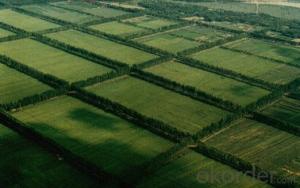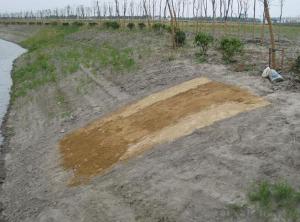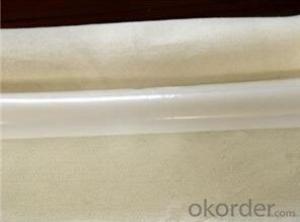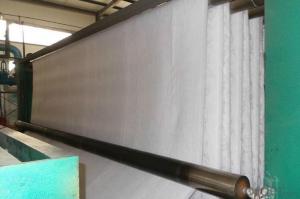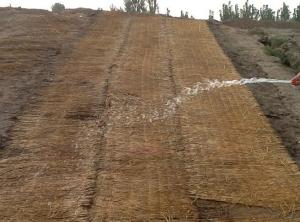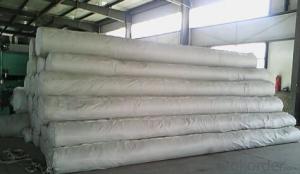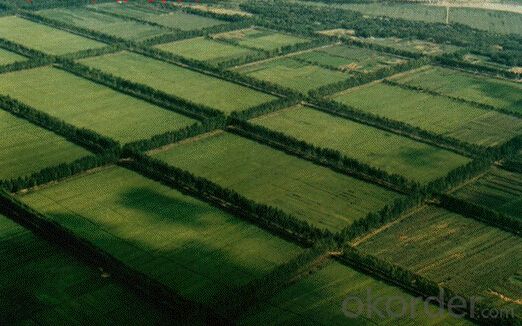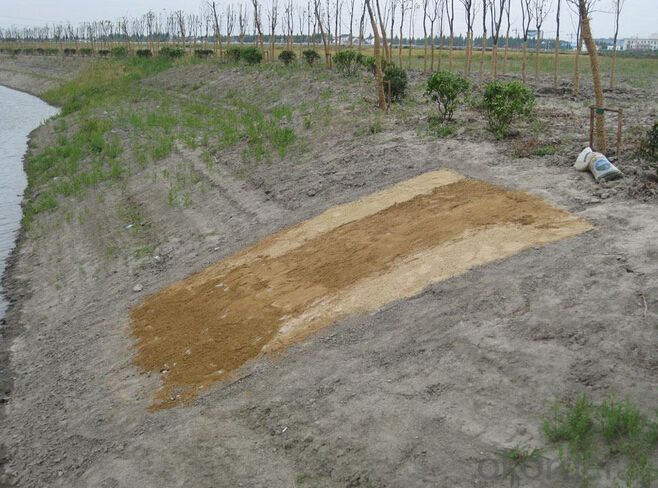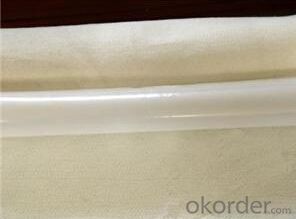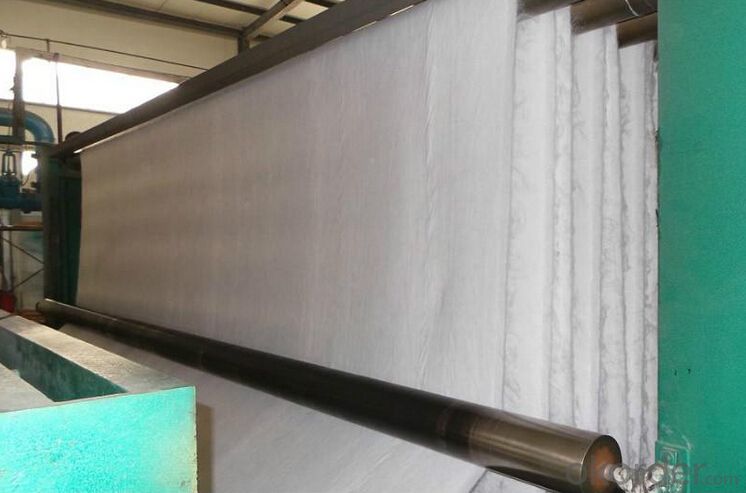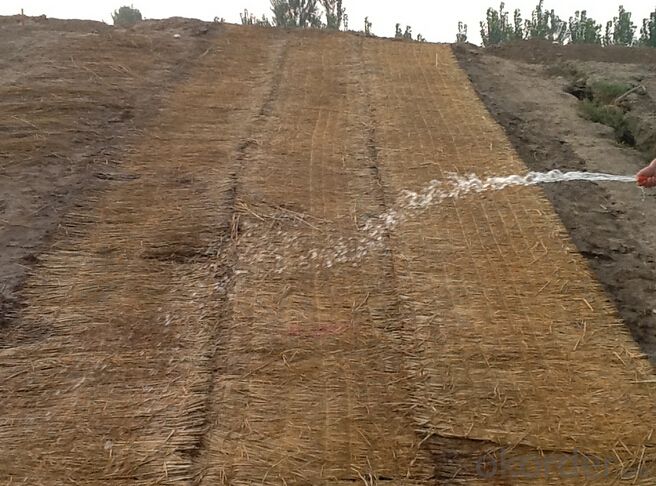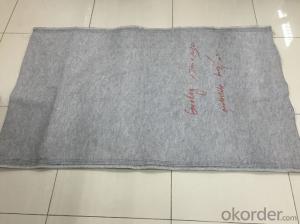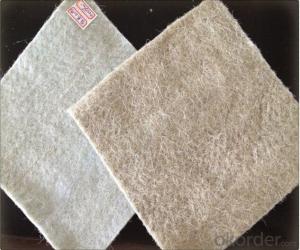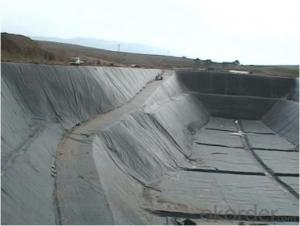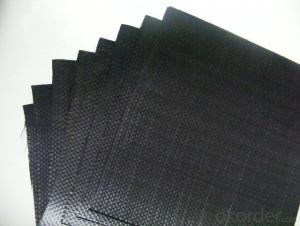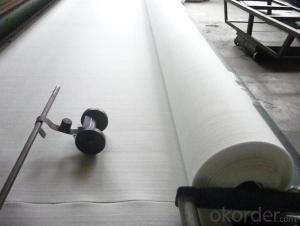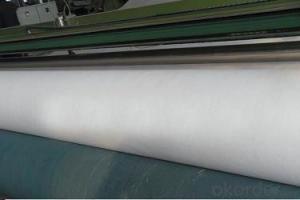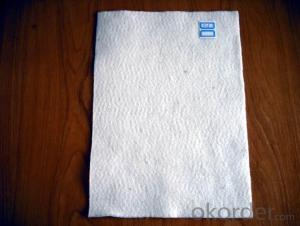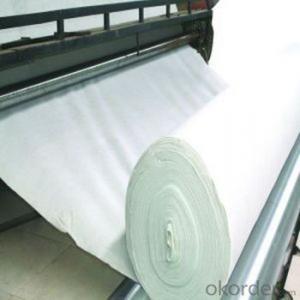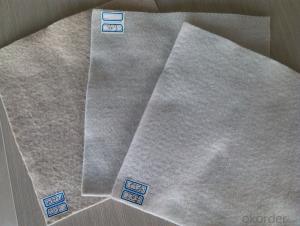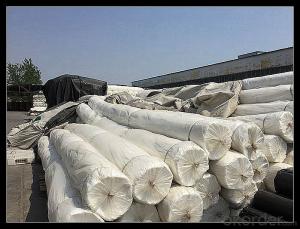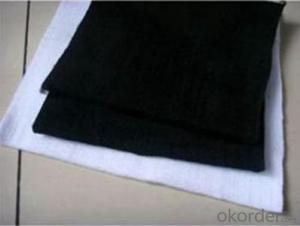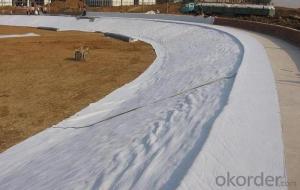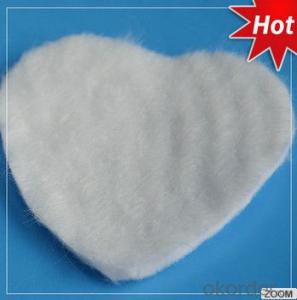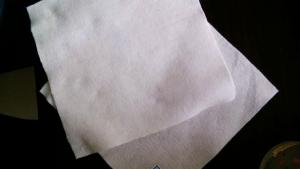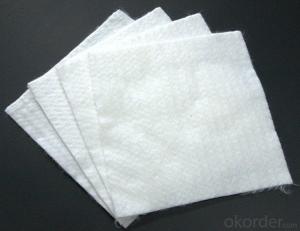Geotextil No Tejido Precio - Non-Woven Polyester and Polypropylene Nutrition Geotextile
- Loading Port:
- Qingdao
- Payment Terms:
- TT OR LC
- Min Order Qty:
- 5000 m²
- Supply Capability:
- 2000000 m²/month
OKorder Service Pledge
OKorder Financial Service
You Might Also Like
Nutrition geotextile in water environmental engineering .
Specification:
Geotextile has excellent permeability, acquired, durability, which can be widely used in railway ,highway, movement hall,Dams,hydraulic structures hence hole, coastal shoal, reclamation,environmental protection and other projects. The main products are Synthetic staple fibers needle punched nonwoven geotextiles and split film yarn woven geotextiles.
Product Feature:
1. Simple and fast construction
2. Achieve the greening effect quickly after construction
3. Due to the grass and composite fiber fabrics become into one integration, so it has the ability of certain degree of flow resistance for the water rising before the grass survive.
4. Composite fiber fabric is a continuous structure from slope top to slope toe, both ends are fixed, has high water flow resistance.
Technical Specification
5.0 m length and 1.05 m width. Reverse side all used filter material. Grass seeds: Bermuda grass (warm season grass), Bahia grass (warm season grass), Kentucky bluegrass (cold season grass), Tall fescue grass (cold season grass), Red fescue grass (cold season grass). Plant height: 0.1 ~ 0.5 m.
| NO. | Items | Specification | Notes | |||
| 1 | Total unit area weight g/sq.m | ≥380 | ||||
| 2 | dimension | width m | 1.0~2.0 | |||
| length m | as per user’s request | |||||
| 3 | Composite fiber fabrics | Material | Polyester Fiber | High strength PET | ||
| Unit area weight g/sq.m | ≥160 | |||||
| Mesh dimension mm | 8×8 | |||||
| Extension strengh kn/m | ≥11 | MD & CD | ||||
| 4 | Filtra layer | Material | Polyester non woven geotextile | |||
| Unit area weight g/sq.m | ≥40 | |||||
| 5 | Grass seeds, Fertilizer | Type | According to actual situation choose 3~5 grass seeds | |||
| Plant height m | 0.1~0.3 | |||||
| 6 | Fiber layer | Material | wood pulp cellulose | |||
| Unit areaweight g/sq.m | ≥15 | |||||
| 7 | flow resistance | ≥4 | not allow appear scour, suction and blanket turn-over etc. damage phenomenon | |||
| M/s | ||||||
| 8 | Anti-UV strengh conservation rate % | 65~80 | 3000hrs Continuously exposure 3000hrs | |||
| 9 | Supporting spare parts | ABS fastening nail | Material | ABS Resin | Fixed between two blankets by length direction | |
| Fiber diameter mm | 35 | |||||
| Nail length mm | 325 | |||||
| Lnail | Material | Steel wire (content 10% zinc-aluminium alloy) | Used to fix single blanket | |||
| Fiber diameter mm | 4 | |||||
| Nail length mm | 200 | |||||
| ABS connecting nail | Material | ABS Resin | Used in the slope between the two blankets ( width direction) | |||
| Nail length mm | 38 | |||||
| Connecting fiber | Material | High strength Polypropylene | Used in the slope between the two blankets ( width direction) | |||
| Length mm | Cut as per request | |||||
APPLICATION:
Generally laid on the river channel, slope protection etc. slope revetment projects, to control the water erosion, soil loss, meantime can reach the effect of slope ecological restoration and landscape greening, making river back to natural.
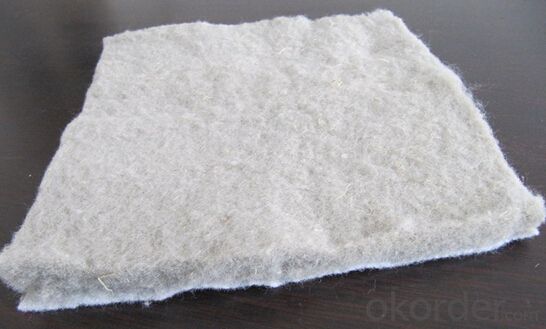
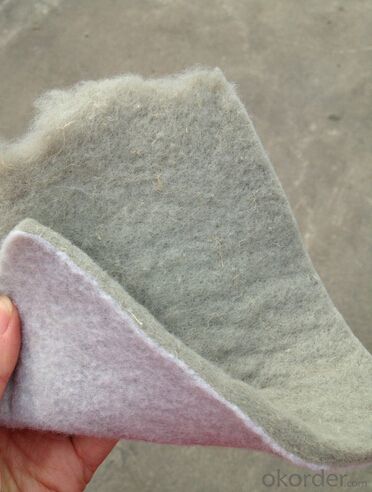
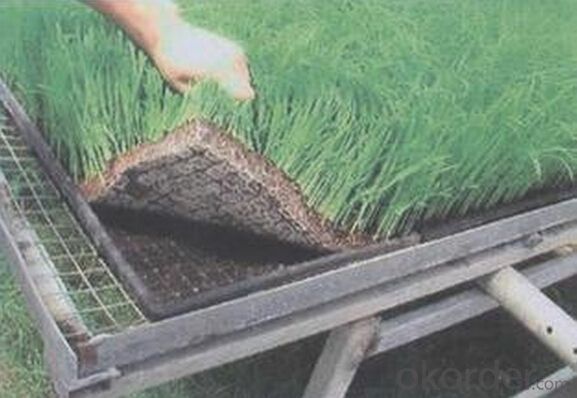
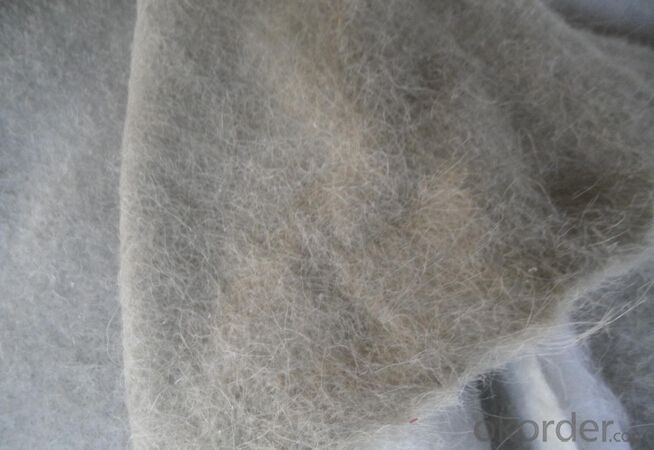
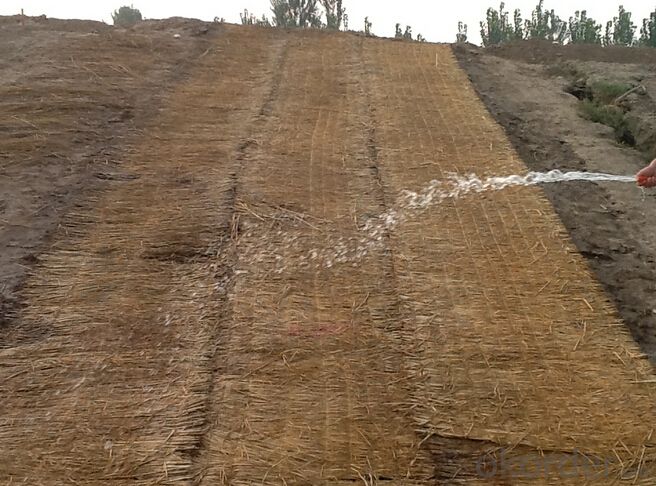
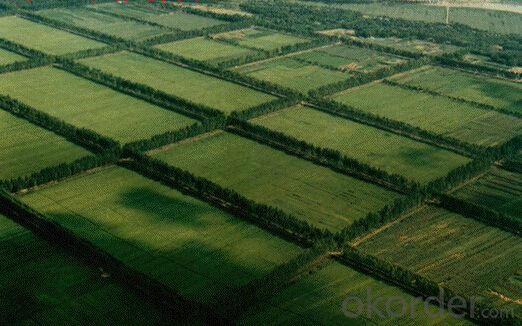
- Q: What are the different functions of geotextiles in geoenvironmental engineering?
- Geotextiles serve various functions in geoenvironmental engineering, including erosion control, soil stabilization, drainage, filtration, and reinforcement. These materials prevent soil erosion by acting as a barrier against water flow and wind forces. They also stabilize soil by improving its mechanical properties, preventing soil movement and settlement. Geotextiles facilitate drainage by allowing water to pass through while retaining soil particles. They serve as a filtration layer, separating different soil layers and preventing the migration of fine particles. Additionally, geotextiles are used for reinforcement purposes, enhancing the strength and load-bearing capacity of soil structures.
- Q: Differences between staple acupuncture nonwoven geotextile and filament spunbonded nonwoven geotextile
- Appearance of different shapes: staple acupuncture non-woven geotextile in the appearance of the surface of the fiber is shorter, and filament spunbond acupuncture non-woven geotextile surface fiber longer. Different materials: staple acupuncture non-woven geotextile with PET polyester staple fiber acupuncture, and filament spunbond acupuncture non-woven geotextile made of polyester chips. Production equipment and different technology: staple acupuncture non-woven geotextile is the polyester staple fiber through the mixing - clutter - comb - shop - acupuncture, and filament spunbond acupuncture non-woven geotextile is the polyester Sliced hot melt - spinning - carding - shop - acupuncture. Implementation of different standards: staple acupuncture non-woven geotextile implementation of GB / T-2008 standards, and filament spunbond acupuncture non-woven geotextile implementation of GB / T-2008 standard. The same specifications of filament spunbonded acupuncture non-woven geotextile quality is better than staple acupuncture non-woven geotextile. Price: the same specifications of polyester staple acupuncture non-woven geotextile price is lower than filament spunbond acupuncture non-woven geotextile.
- Q: What are the different installation guidelines for geotextiles in reinforcement projects?
- There are several guidelines to follow when installing geotextiles in reinforcement projects. Firstly, ensure that the subgrade is properly prepared and compacted before laying the geotextile. Next, carefully unroll the geotextile and secure it in place using stakes or by embedding it in the soil. It is important to overlap adjacent rolls of geotextile by at least one foot to ensure proper coverage. Additionally, avoid wrinkles or folds in the geotextile as they can reduce its effectiveness. Finally, cover the geotextile with a layer of soil or aggregate to protect it from damage and to provide additional reinforcement.
- Q: Geotextile with the welding tool where to buy
- To our here, I was the manufacturer
- Q: What are the different geotextile manufacturing processes?
- There are several different geotextile manufacturing processes, including needle punching, thermal bonding, spunbonding, and weaving. Each process has its own advantages and is used depending on the desired properties and applications of the geotextile. Needle punching involves mechanically interlocking fibers, thermal bonding uses heat to bond fibers together, spunbonding creates a nonwoven fabric through extrusion and stretching, and weaving involves interlacing yarns to create a fabric. These processes allow for the production of geotextiles with various strengths, permeabilities, and filtration capabilities, making them suitable for a wide range of civil engineering and environmental applications.
- Q: How do geotextiles help with asphalt pavement reinforcement?
- Geotextiles help with asphalt pavement reinforcement by providing a strong and stable base for the asphalt layer. They prevent the mixing of different soil layers, distribute loads evenly, and increase the tensile strength of the pavement. Additionally, geotextiles help to reduce cracking, rutting, and other forms of pavement distress, resulting in a longer-lasting and more durable road surface.
- Q: How do geotextiles help with soil confinement in erosion control mats?
- Geotextiles help with soil confinement in erosion control mats by providing a stable base for vegetation to grow, preventing soil erosion and promoting root development. The geotextiles act as a barrier, holding the soil particles in place while still allowing water to pass through, reducing the impact of rainfall or water flow on the soil surface.
- Q: Geotextile production process
- Geotextile is a big class, there are many forms. Non-woven and non-woven. Non-woven and sub-filament and short wire; sub-mechanical entanglement, hot forming and chemical bonding. Spinning is also divided. Look at the relevant information.
- Q: With sand and gravel, geotextile do blind ditch how to construction
- Geotextile wrapped sand and gravel, play a role in filtering drainage, the equivalent of the use of blind ditch, Ji child irrigation twisted thieves ghost Creek Handan Huaxu geotextile material manufacturers
- Q: Polyester geotextile filter layer sets what the amount
- Polyester filament geotextile Features: Polyester filament geotextile is made by polyester method by spinning acupuncture consolidation directly made, product specifications from 80-800g / m2 arbitrary choice, it is geotechnical engineering and civil engineering In the application of a geosynthetics, polyester filament into a network and consolidation method, the fiber arranged in three-dimensional structure. In addition to good mechanical properties, but also has a good vertical and horizontal drainage performance and good extension properties and high resistance to biological, acid and alkali, anti-aging and other chemical stability. At the same time, it also has a wide pore size range, tortuous pore distribution, excellent permeability and filtration performance. Polyester filament geotextile Uses: water conservancy project dam and slope protection of the filter, channel isolation, seepage; road, rail, airport runway foundation isolation, filter, drainage, slope, retaining wall and road reinforcement, Drainage; Port Engineering soft foundation treatment, beach embankment, harbor wharf and breakwater reinforcement, drainage; polyester filament geotextile has been widely used in the field of infrastructure construction, and gradually applied to a wider range of areas. Geosynthetics are the general term for synthetic materials for civil engineering applications. As a kind of civil engineering material, it is a synthetic polymer (such as plastic, chemical fiber, synthetic rubber, etc.) as raw materials, made of various types of products, placed in the soil, the surface or between the various soil , Play to strengthen or protect the role of soil. "Geosynthetics application of technical specifications" will be divided into geotextile geotextile geotextile, geomembrane, geotextile special materials and geotextile materials, geotextile, fiberglass, geotextile and other types.
Send your message to us
Geotextil No Tejido Precio - Non-Woven Polyester and Polypropylene Nutrition Geotextile
- Loading Port:
- Qingdao
- Payment Terms:
- TT OR LC
- Min Order Qty:
- 5000 m²
- Supply Capability:
- 2000000 m²/month
OKorder Service Pledge
OKorder Financial Service
Similar products
Hot products
Hot Searches
Related keywords
